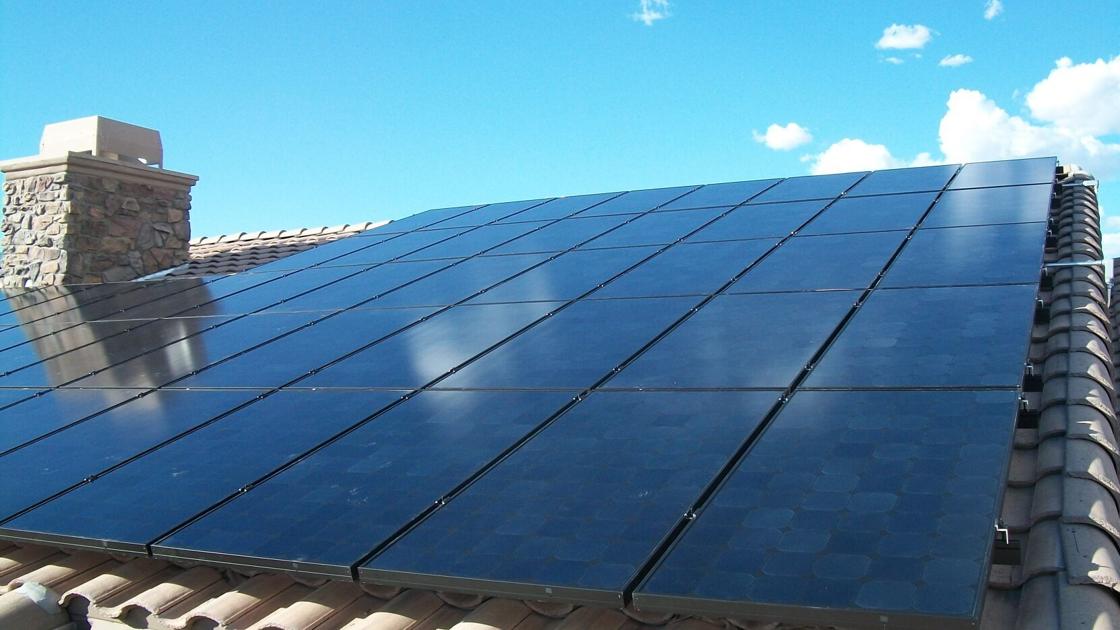Rosie Romero
Special to the Arizona Daily Star
It is time to catch up on Arizona’s solar energy state.
To help us report to you, we invited Rosie certified partners at Sun Valley Solar Solutions to update us, including founder and CEO Russ Patzer and senior VP of marketing Kyle Ritland, Sr.
Q: What’s new in solar energy?
A: Solar energy is still from the sun, of course, but how our state utilities handle energy coming onto their grid has changed considerably.
Utility companies who use the time-of-use rate have started discouraging homeowners from feeding solar electricity into the grid as it is generated. The time of day, typically midday, when the sun is producing the most, is not the time of day when power companies see the demand for peak power.
Typically, the sun generates the most electricity between 10 a.m. and 2 p.m. daily. As a result, this is when solar panels typically produce the most electricity, offsetting what homeowners need to purchase from the power utility and sending any excess back to the grid. Conversely, the power companies see the highest demand for electricity between 4-7 p.m.
People are also reading…
The bottom line is that residential solar systems generate most of their power during the late morning and early afternoon. This process is great for the homeowner, of course, but it creates a surplus of power on the grid when utilities don’t need it.
So there is — pardon the pun but I couldn’t “resist” — a disconnect between supply and demand.
Q: Is there a resolution?
A: Solar batteries store electricity using chemical reactions and release that stored energy when it’s needed most — such as during peak demand hours later in the day.
In short, using batteries allows the homeowner to store and utilize 100% of their solar power rather than send excess energy back to the grid when it’s not needed.
This simple reality has made batteries the key to maximizing your return on solar energy investments as utilities slowly reduce the buyback rates for excess solar power.
Q: How have these changes affected rate changes?
A: The way utility companies have restructured their rate plans is encouraging a shift toward solar and battery installations, rather than solar alone.
For example, as recently as 2017, Arizona Public Service was compensating homeowners at retail rates for any excess solar power sent back to the grid — a process known as net metering.
The utility ended traditional net metering that same year and implemented a new system offering lower, fixed export rates for excess solar.
Each year since, this export rate has been reduced by 10% (with the exception of 2020 due to the pandemic). As a result, it has become more lucrative for homeowners to store their excess solar energy and use it for emergency backup, or to offset more expensive on-peak hours later in the day when solar panels typically produce less.
A win for the utilities
Utilities see benefits with this new paradigm. As more people draw from their batteries during peak demand hours, utilities will rely less on natural gas-fired “peaker” plants to bolster production during the higher demand periods from 4-7 p.m. Currently, there’s not enough battery capacity to lighten the load, but the potential is there as batteries become more commonplace.
A win for the homeowners
How batteries help homeowners is straightforward. Instead of sending excess solar energy back to the grid, the power is funneled to a battery for storage.
This stored power is then available to further offset more expensive on-peak hours later in the day when solar panel production is naturally lower. It can also be used to power the home during grid outages, a situation that can be lifesaving during our hottest summer months.
Q: Are there other benefits to having the batteries installed?
A: Those of us who have photovoltaic systems with a battery backup have several advantages.
Stored energy can be discharged during hours of peak demand when solar panel production is naturally lower. That provides additional savings later in the day as well as when the sun is highest in the sky.
If an outage should occur, you are more likely to weather the storm without interruption to critical electrical systems, such as air conditioning.
Solar energy is still naturally cleaner than grid energy. The more solar energy you store and use, the smaller your carbon footprint.
Patzer tells us there are several companies that manufacture batteries for solar equipment. Those that are the most popular tend to have sophisticated software systems designed to make managing your system easier.
While battery installations are on the rise, the potentially positive impact of lowering overall electrical consumption for utilities isn’t yet there. The numbers are getting closer, but not yet at a capacity to make a system-wide impact. That said, utilities see the benefits and newer rate plans reflect this.
Where do we go from here?
Patzer has a few tips for those of you who may be considering a solar package for your home.
In talking with Patzer and Ritland, we realize there is an important shift in the photovoltaic home-based system technology. Solar and batteries are the key to savings and security going forward.
Rosie on the House is a free homeowner resource. Listen to our broadcast every Saturday on KNST from 11 a.m. to noon. Ask questions at info@rosieonthehouse.com.
